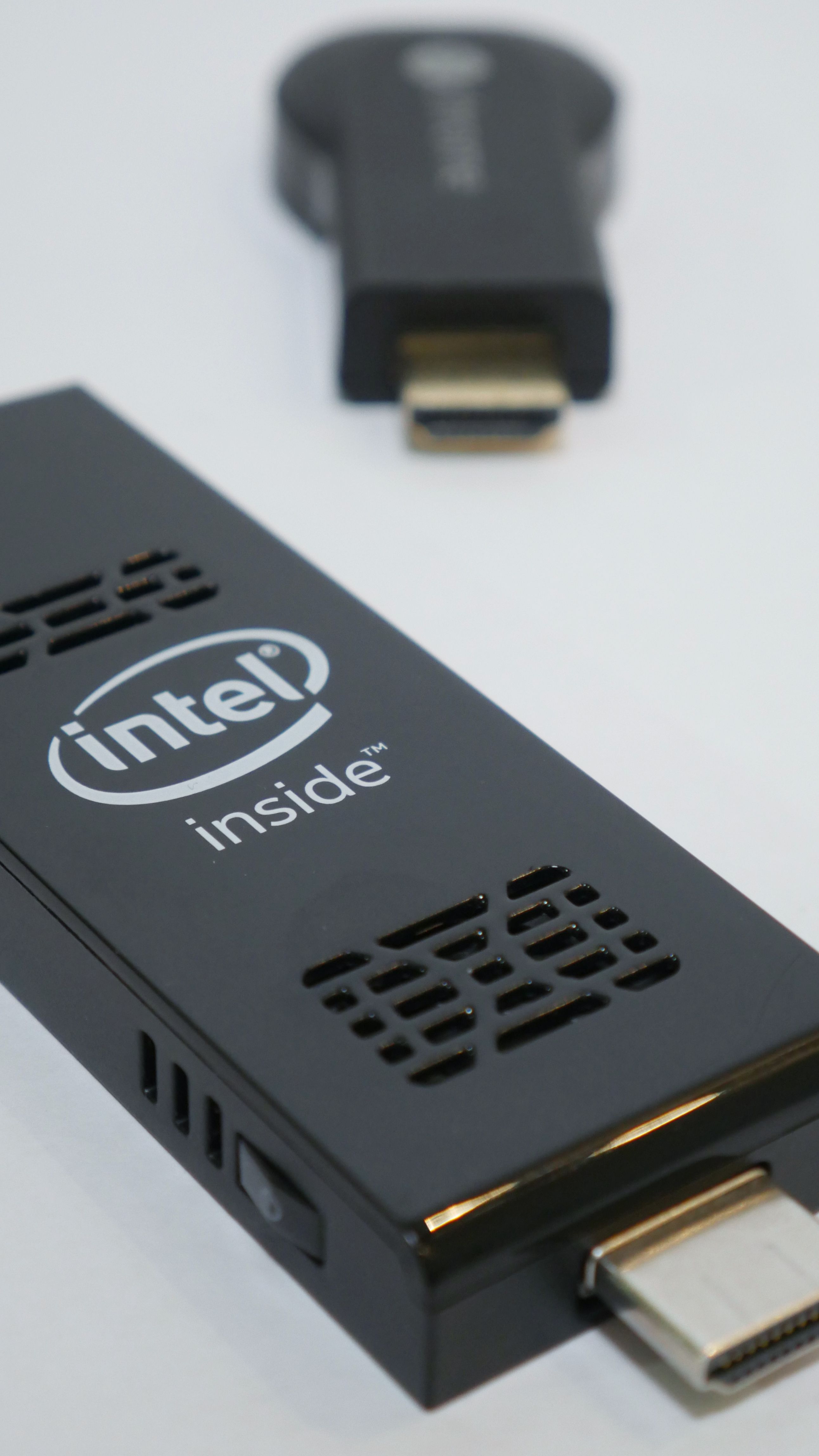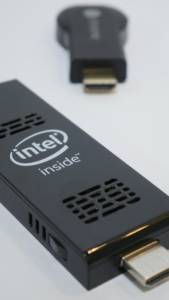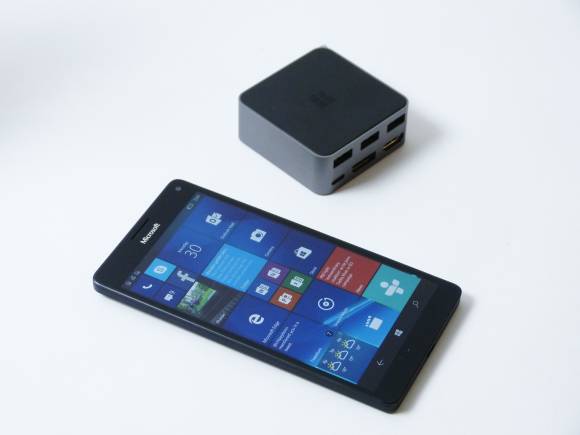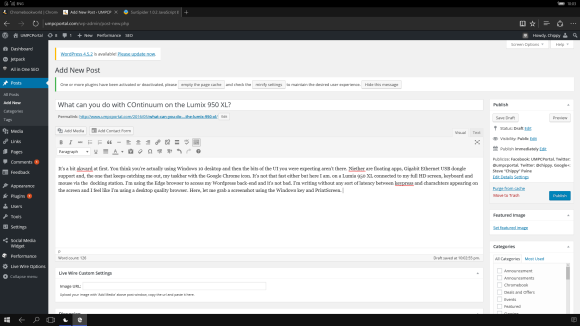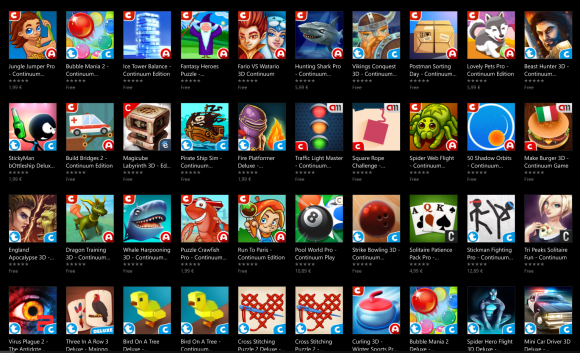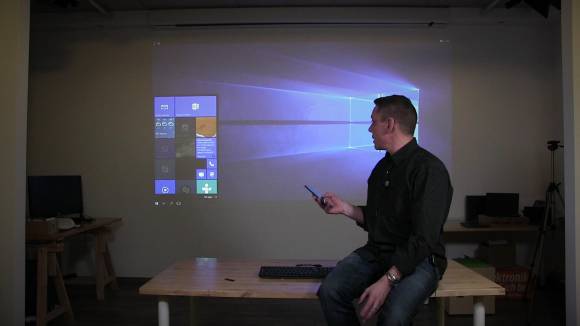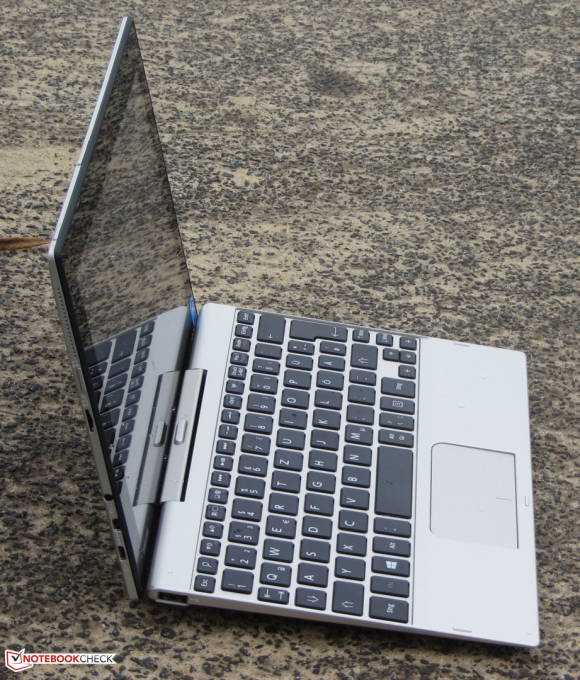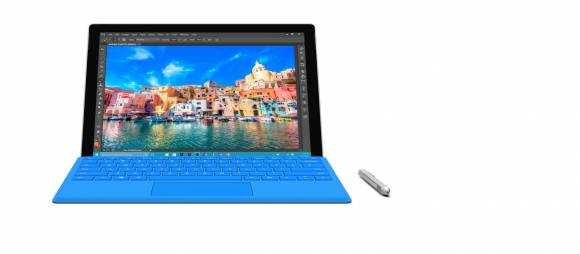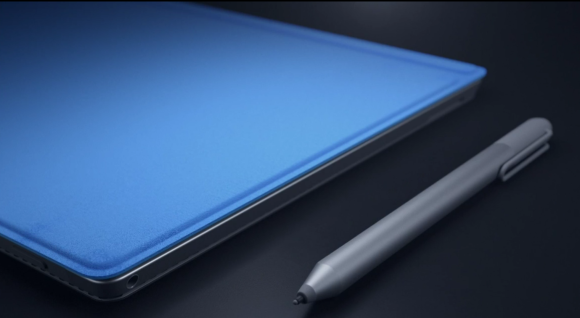The Xbox Dongle, a Chromecast / FireTV-like streaming and gaming device could help Windows 10 in the consumer space and might be a critical last-chance for Microsoft to keep Windows relevant for consumers. Windows Mobile was the potential low-cost, high volume strategy that could have created a stable development economy but now it’s gone there isn’t much else left – apart from the dongle.
Read the full storyTag Archive | "Windows 10"

Discounted Lumia 950 XL is not enough. Analysis and LumiaBook proposal.
Posted on 30 May 2016
The Lumia 950 XL is 400 Euro in Europe now and offers a lot of hardware and features for the money but is it worth buying or should you completely ignore it? My analysis says ‘move on’ as I struggle to find any type of target customer – and that includes cameraphone fans. What next for Lumia and Windows Mobile? The LumiaBook?
Read the full story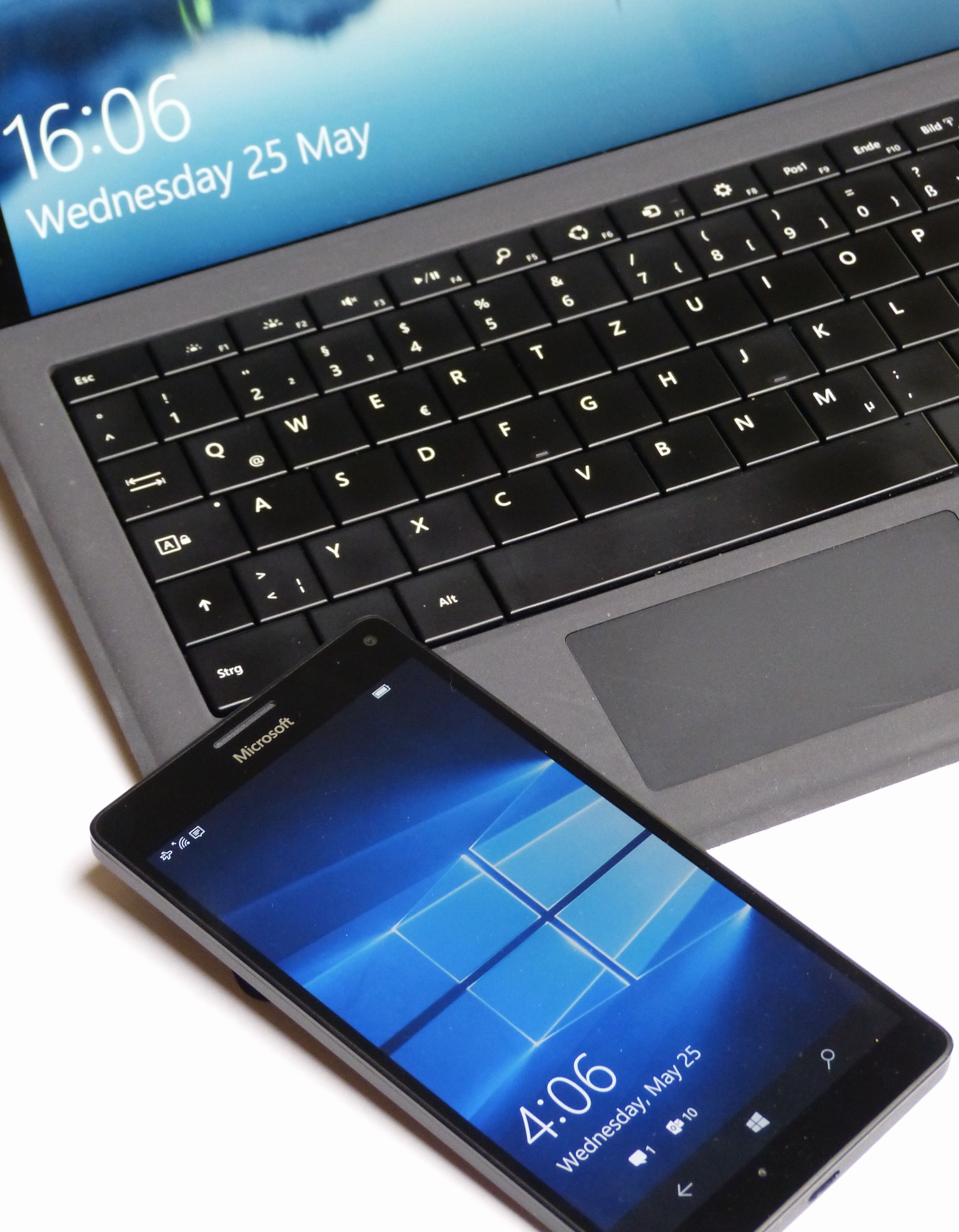
Windows Home, UWP at risk as Microsoft steps out of consumer phone market.
Posted on 25 May 2016
Does the Universal Windows Platform (UWP) and, ultimately, Windows Home have a future now that Microsoft are stopping development work on consumer phones? I think there’s a domino effect about to happen over the next 24 months that will see the consumer laptop market turn away from Windows Home and I don’t see a way that anyone can stop it. UWP is then left spreading awkwardly across gaming (Xbox) and business (PCs.) UWP is at risk. Continuum too. Standing on the sideline is Chrome OS and the Google Play Store. I think it really is time-up for Windows in the consumer space.
Read the full story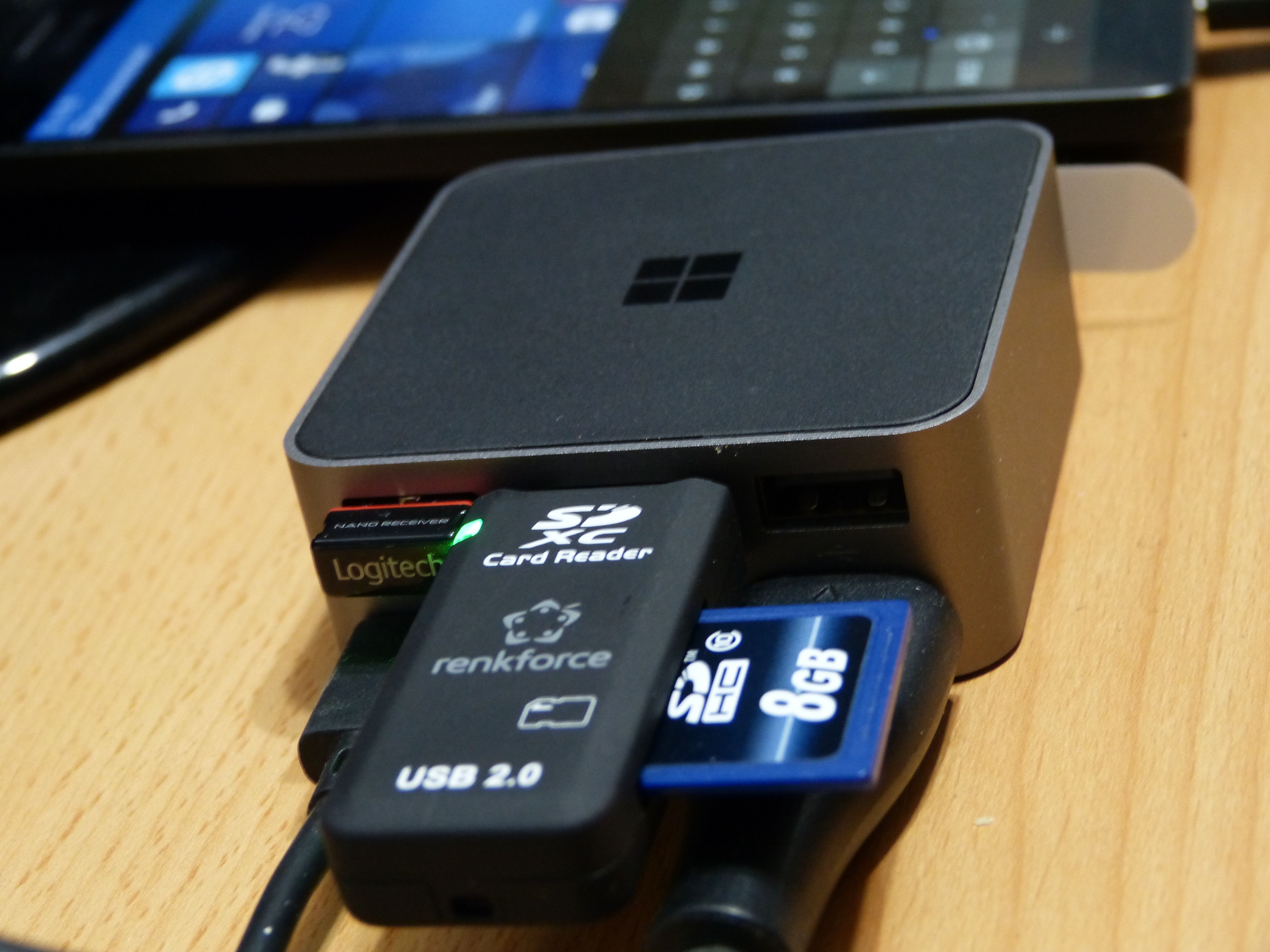
What can you do with Continuum on the Lumix 950 XL? (Detailed test.)
Posted on 25 May 2016
Continuum on the Lumia 950 LX is a bit awkward. You think you’re actually using Windows 10 desktop and then the bits of the UI you were expecting aren’t there. Neither are floating apps, Gigabit Ethernet USB dongle support and, the one that keeps catching me out, my taskbar with the Google Chrome icon. It’s not that fast either but here I am. on a Lumia 950 XL connected to my full HD screen, keyboard and mouse via the docking station writing this article. I’m using the Edge browser access my WordPress back-end and it’s not bad. I’m writing without any sort of latency between key-press and characters appearing on the screen and I feel like I’m using a desktop quality browser. Here, let me grab a screenshot using the Windows key and the Print Screen button on my USB-connected keyboard.
That screenshot was as easy as it is on a Windows PC. As I move to try to right-click on the suggested word corrections I’m met with a block. I can’t find any way to auto-correct the underlined words and now I’m annoyed. Oh wait, there they are, showing up on the bottom of the phone screen, way out of my view and absolutely useless as I have to take a hand off the keyboard to use them.
It’s things like this that will really annoy the average Windows 10 user trying to get to grips with Continuum and that’s not all. Consider the 950 XL, one of the most powerful smartphones on the market, as a poor performer when it comes to desktop operations. Expectations are high as you communicate through what you think is Windows 10 desktop but when things slow down, you feel like you’re on a 2010 netbook. As I start-up Groove Music and Twitter the experience degrades to frustrating. The scroll button on the mouse has stopped working, my background music has stopped too. Groove Music crashed.
I’m using Windows 10 version 10.0.10586 here and I don’t really know if its Windows 10 that’s the problem or the Lumia 950 XL which was heavily criticized for instability when it launched. I’ll carry on. I’ll continue to work through a number of ‘situations’ and report as I go along.
YouTube (Via Edge browser.)
Before I start I save my draft here and check my Internet speed via Speedtest which downloads easily through the Store. It doesn’t open on my desktop screen as it doesn’t support Continuum but having the phone as a second screen allows me to continue writing here as it performs the test. 15 Mbps down, 5 Mbps up. No issues there. Big Buck Bunny at 1080p is quick to load and quick to reach a full buffer and 1080 playback resolution. Perfect. Searching on the YouTube website is quick. The 1080p 60 fps version works smoothly too. At the end of the test I feel like I’m on a slow laptop with a good video decoder, a bit like the experience you get on the cheap Windows 10 tablets, which, it has to be mentioned, are cheaper than this Lumia 950 XL
Google Docs (Via Edge Browser)
As I access Google Docs everything looks OK. I switch quickly between two docs and the web app stops responding. It’s crashed the tab. I try again and discover that the trick is to wait until the document is completely loaded before trying to edit. That can take 10-20 seconds which isn’t good if you’ve got something you want to edit.
Powerpoint with Groove Music
I’m using the Powerpoint Mobile and Groove Music apps and editing a recent Powerpoint. Editing works smoothly (smoother than I expected) as does sideshow playback. Success, at least in this short test. I assume Excel and Word Mobile will work without performance issues on smaller files.
Lumia 950 XL heat.
A quick heat check at this stage reveals something more than skin temperature. It’s getting warm under the 950 XL. I wish I had access to task manager to check CPU usage but that’s not possible. Groove and Tweetium are still running in the background.
Google Analytics.
This very heavy web-based application works well. It’s slower than on my Ultrabook but still usable; possibly faster than a Windows 10 tablet. Impressive. Groove Music still running in the background.
Photo Editing.
I have some problems here. The built-in editing apps don’t support Continuum so my only choice is to pick up the phone and edit using apps there. I try OneDrive in the browser but it’s slow. I give up with the ‘not responding’ tab. This is a big disappointment that I’ll have to track, unless you have tips.
Radio Streaming.
I’m so pleased that TuneIn have finally updated their Windows Store radio streaming app. The old one was broken in a big way but the new one works well. 100% success as I access my favorite streams. 7 streams from my playlist worked quickly and fuss-free.
News reading.
I’ve had some issues with the Bing News app in the past but the curation in my region (English, UK) has improved recently. Nextgen, my choice for RSS feeds, doesn’t work on Continuum. I switch to my Google News account and it’s smoother than I expect.
My apps that don’t work.
I have 71 apps on my Lumia 950 XL. 30 of those don’t support Continuum but of the 41 apps that support continuum only 7 are third-party apps and only 3 of those (TuneIn, Xing and Tweetium) are apps that I believe are truly independant of Microsoft’s partnerships and subsidies. Facebook, Instagram and Twitter, for example, are apps that are likely to have been supported by Microsoft. Note that Netflix does not work in Continuum mode. Even Microsoft’s Skype doesn’t work in Continuum although I admit there’s an issue of camera positioning there.
Gaming in Continuum
The only game I’ve downloaded so far is Asphalt 8 Airborne and that doesn’t work on the big screen. As I write this I’m downloading games…
Only three of the top ten games in the Store are PC capable. Candy Crush Soda Saga, one of the ‘PC games’ works on the big screen, the others don’t. There’s no ‘Continuum Enabled’ section of the Store and if you search for “continuum” you’ll find one company, Academ Media, dominating the search results due to titles that include the word ‘continuum’. The games I tried worked but were very basic. Some were fun and at least it’s an indication that someone is working on Continuum-enabled games.
I conclude here with one major recommendation to Microsoft – You need to include a Continuum-enabled filter in the Store.
I’m now 2 hours into this article and the Microsoft 950 XL isn’t any warmer than it was an hour ago. It’s being charged as it provides data through the USB-C port and this WordPress browser tab on Edge is stable and working well. No problems with Edge. I noticed some latency as I downloaded a series of 20+ apps but that’s to be expected on this low-end PC.
As I finalise this article everything appears to have locked up. Wait…it’s back. Mouse scrolling wasn’t working and that’s something that has happened again and again through this test across the browser and across Windows Store apps but…
Summary of Continuum.
In my 3 hour test Windows Continuum and Continuum enabled apps worked well. I was really, really annoyed at the lack of photo-editing ability and surprised that Microsoft hasn’t enabled a ‘Continuum enabled’ section in the Windows Store. I was annoyed at the lack of split-screen Continuum apps and, Microsoft, I don’t want to be looking at my phone as part of my desktop UI.
Windows 10 has, in general, a big problem with app quantity and quality and it’s very obvious in Continuum mode where popular apps don’t work.
Final note: I could not find a way to upload camera images via SD card to the 950 XL. These images were uploaded via the WordPress website and it took way too long. Everything you see, however, was created using the Lumia 950 XL in Continuum mode on a Full HD screen with USB keyboard and mouse. It wasn’t a barrier-free experience but faster and smoother than I had expected.
There’s SO MUCH POTENTIAL here but, alas, SO FEW APPS. Performance is easy to solve, The app problem is a bigger one.
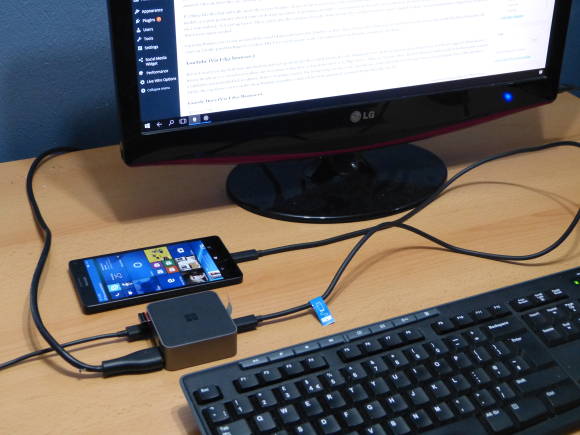
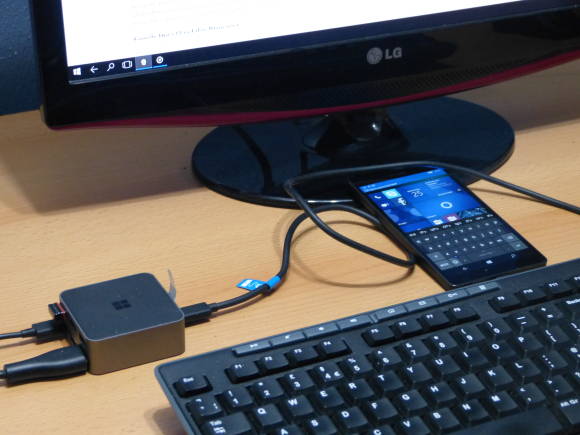
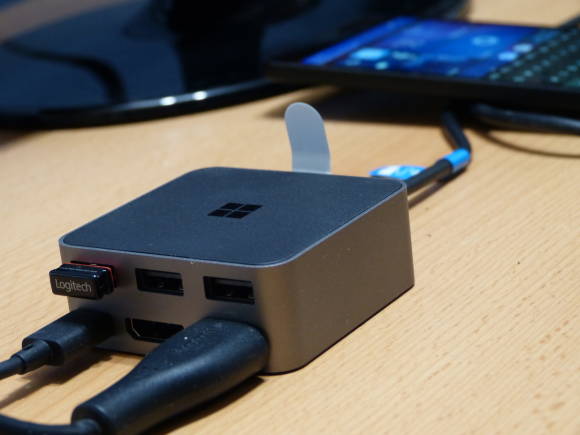
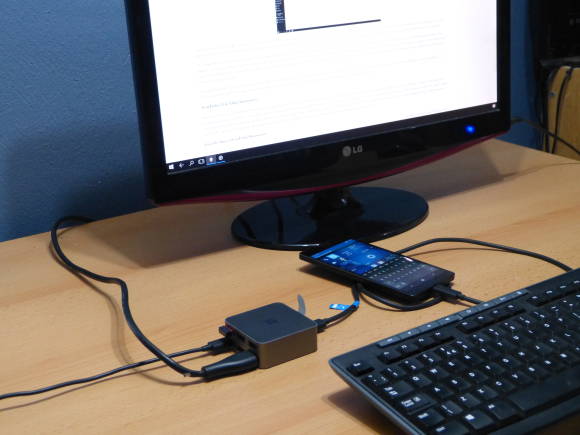
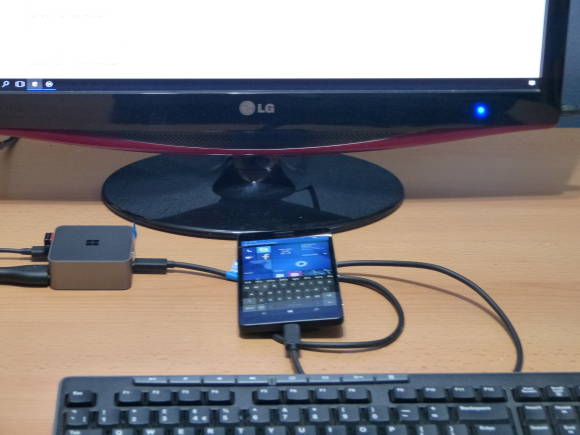
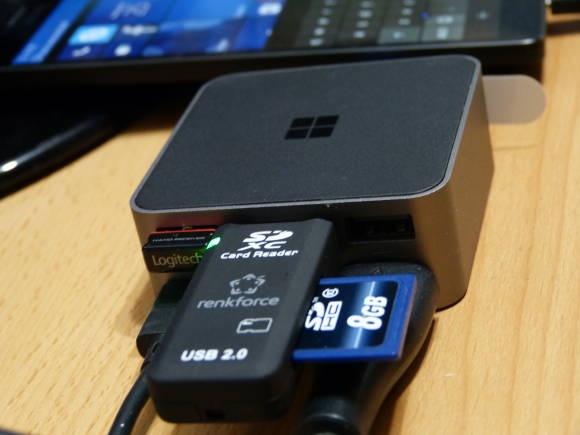
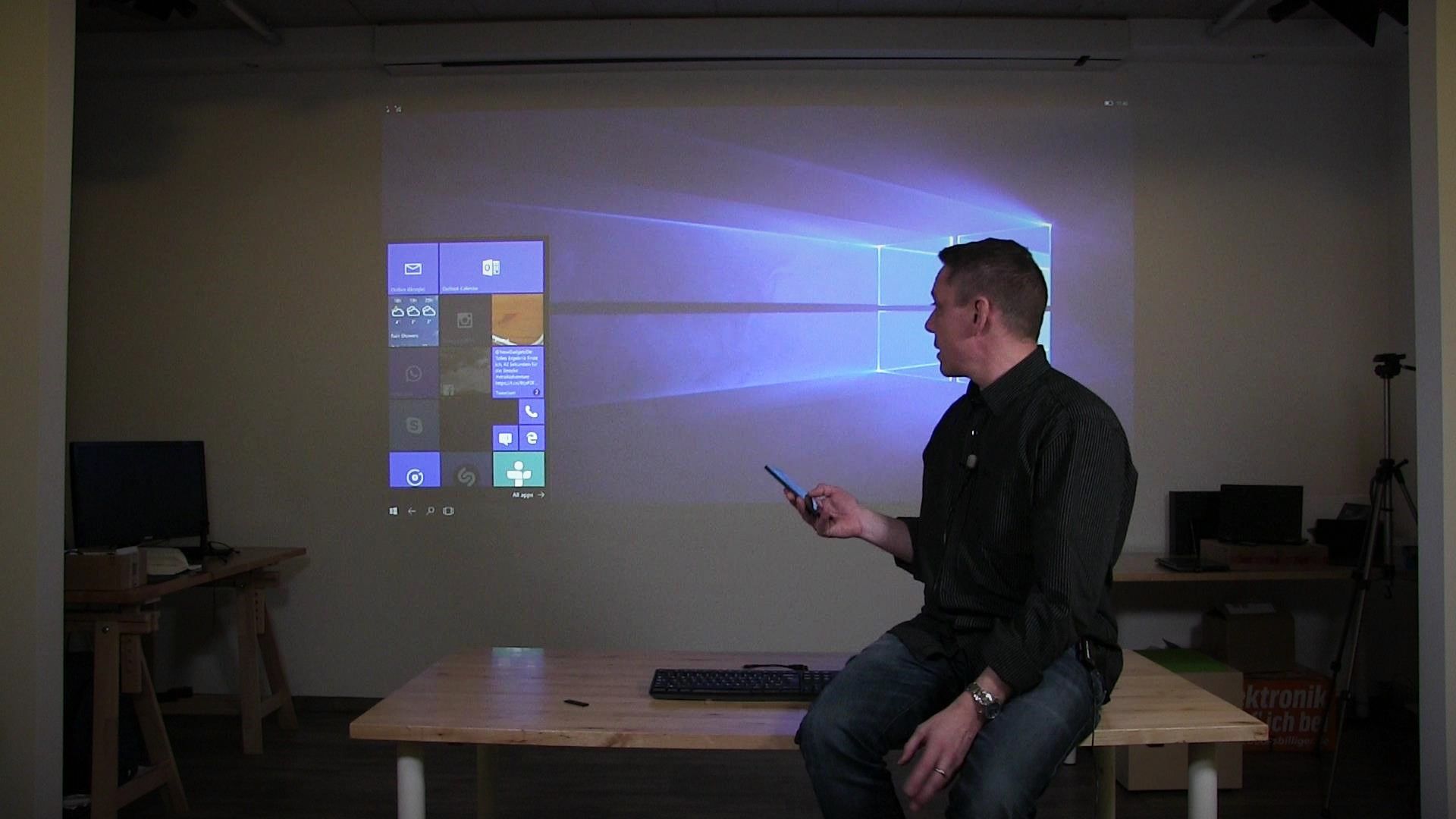
Testing Windows 10 Continuum over Miracast…on a very big screen! Video Demo.
Posted on 03 February 2016
Testing Windows 10 Continuum has been something I’ve wanted to do since, well, the second it was announced. Today I got to play with the Microsoft Lumia 950 XL and I took the opportunity to get it running over Miracast for a completely wireless Windows 10 Mobile, extended screen experience. For someone like me, interested in highly integrated mobile computers, this was a groundbreaking moment.
Read the full story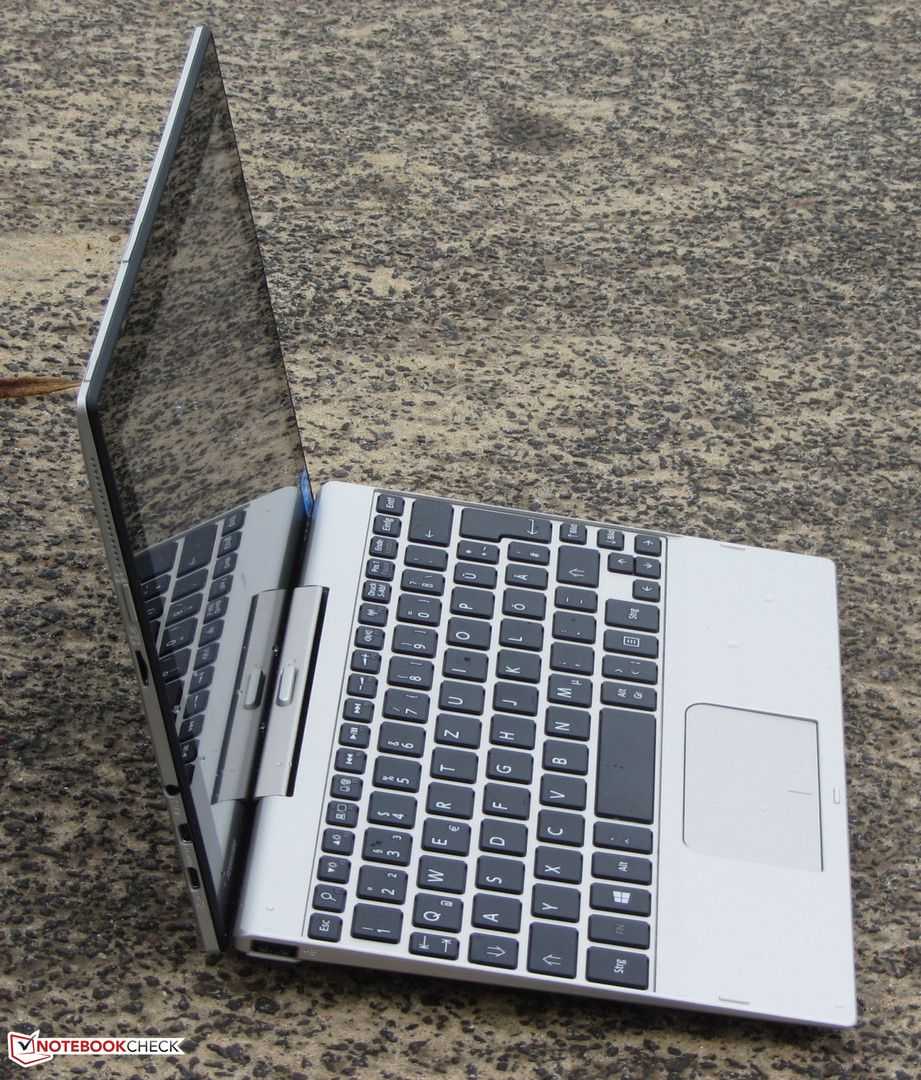
Toshiba Satellite Click 10 – battery life King.
Posted on 25 November 2015
After testing a number of high-end devices recently, including gaming-capable PCs and the Surface Pro 4, it was a really interesting experience with the Toshiba Satelite Click 10 last week. Going from €1500 of Surface Pro 4 down to €399 of entry-level mobile 2-in-1, with the same total weight, highlighted just how much value you can get for your money…and what the differences are between high-end and low-end. My video review for Notebookcheck is embedded below in this article but I’ve also added thoughts about how the Click 10 compares with the ASUS Transformer Book T100HA (good power, storage options) and the Acer Switch 10E (a great budget 2-in-1.)
Read the full story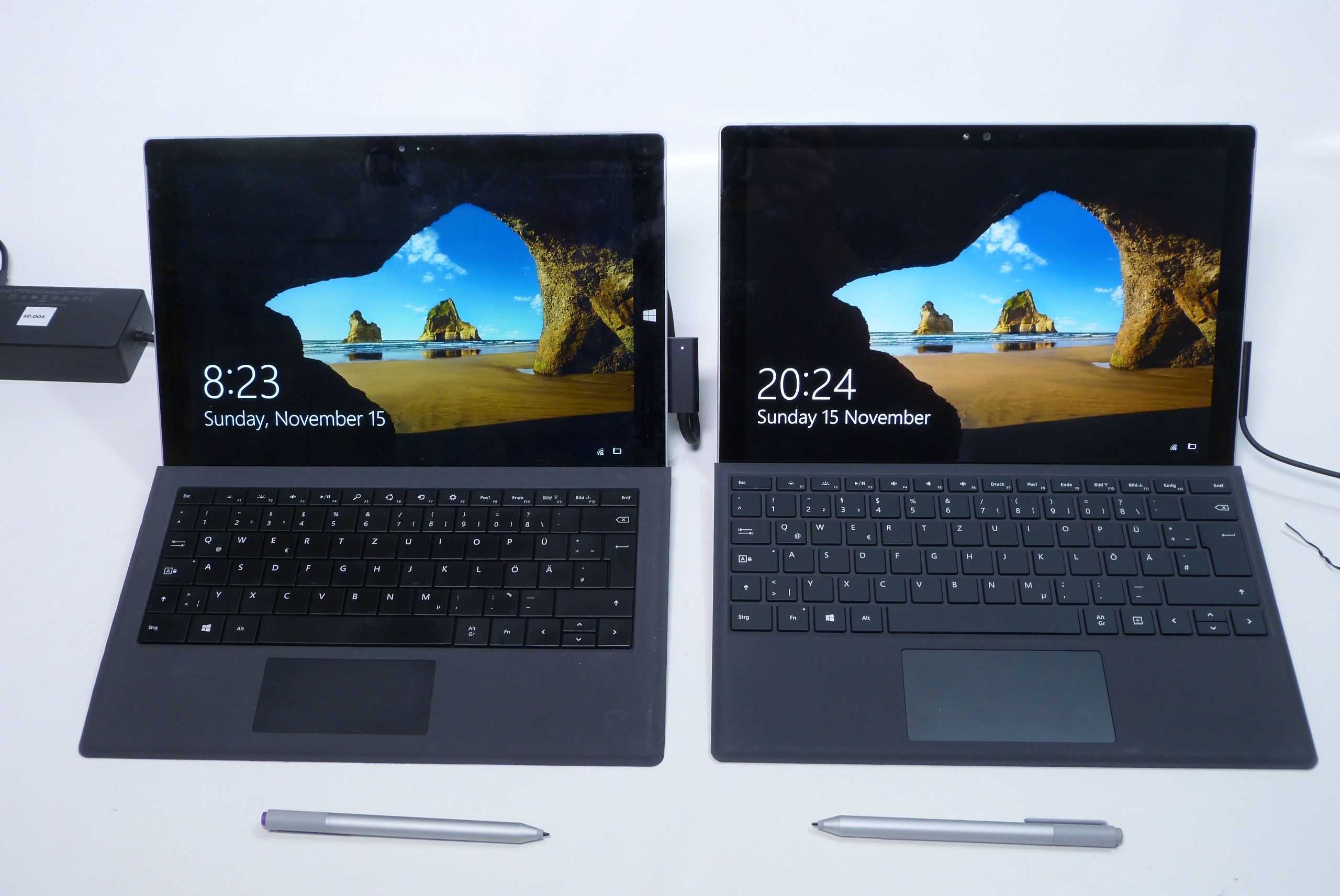
Surface Pro 4 overview, from a Surface Pro 3 user. Is it Worth Upgrading?
Posted on 16 November 2015
I have a Surface Pro 4 with Core i5, Type Cover keyboard and docking station with me now and I’ve just finished the first of a set of videos for Notebookcheck (see it in the Surface Pro 4 review here) and come away, as you’d probably expect, impressed. One of the first things I did, however, was to put the new Type Cover keyboard on my Surface Pro 3. The ‘upgrade’ is significant and is one of a number of considerations to be made if you’re thinking of making the jump from Pro 3 to Pro 4.
Read the full story
Surface Pro 4. New thermal design appears to work well, and that’s very, very important.
Posted on 22 October 2015
The usual suspects got their Surface Pro 4 devices before anyone else and have been allowed to publish their reviews. I think you can skip many of them to be honest but one stands out. No, it’s not my review (I was 6 months behind the curve with my Surface Pro 3 review,) it’s the Anandtech review. It’s jam-packed with good information.
 |
| |||
 |
| |||
 |
| |||
 |
| |||
 |
| |||
 |
| |||
 |
| |||
 |
| |||
 |
| |||
 |
|

